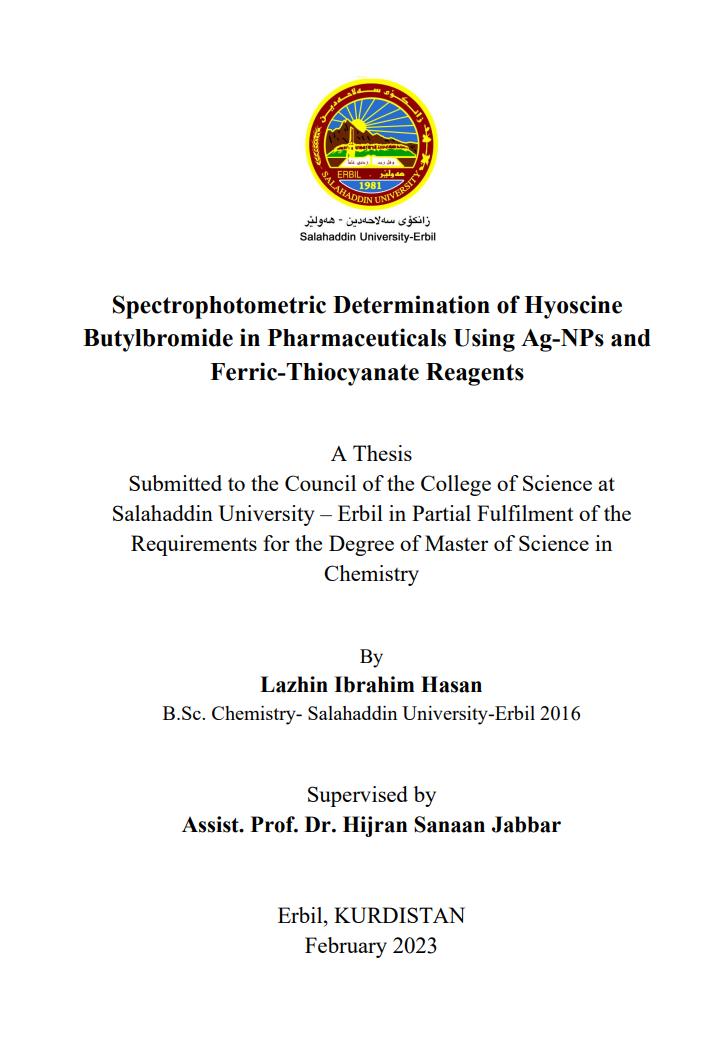
Summary
This thesis includes three main chapters:
Chapter one is an introduction including a general review concerning pharmaceutical analysis, importance of pharmaceutical analysis, and the significance of hyoscine butylbromide (HBB) as an antispasmodic in treating peptic ulcer, gastritis and various disorders of the gastrointestinal tract in pharmaceutical preparations. In addition, this chapter includes the definition, properties and applications of nanomaterials especially silver nanoparticles (Ag-NPs). It also includes principles of flow injection analysis (FIA), reverse flow injection analysis (rFIA), spectrophotometry, and methods used for determination of hyoscine butylbromide.
Chapter two includes synthesis and application of Ag-NPs as a colorimetric probe for the fast, selective and simple determination of hyoscine butylbromide. The proposed method was based on the Ag-NPs aggregation induced by their interaction with the cited drug. This interaction produced a colour change from yellow-brown to colorless measured at 405 nm. The methods linear concentration range was 0.10 – 50.0 µg/mL with a correlation equation (Y= 0.0132 X + 0.3174), coefficient of determination 0.9981 and quantification limits of 0.303 µg/mL. A thorough investigation was done to validate the method’s analytical performance, and the findings were satisfactory. With great accuracy and precision, this approach was used to estimate HBB in pharmaceutical tablet samples with recovery percentages ranging from 96.20 to 98.10%. Since there are no critical reaction conditions or solvent extraction involved in the described method, it is distinguished by its simplicity. The results were quite consistent with those attained using the approved standard method.
Chapter three includes two fast and simple spectrophotometric approaches for the determination of hyoscine butylbromide in pharmaceutical formulations using batch and flow injection methods. The proposed approaches are based on the reduction of ferric ion to ferrous ion by HBB and the subsequent complexation reaction of excess Fe(III) and thiocyanate which gave maximum absorbance at 478 nm. The experimental conditions of both methods for the assay were studied and optimized. The absorbance was found to decrease linearly with the drug concentration to give a calibration curve which obeys Beer’s law in the range of 0.5-200, and 5.0-200 μg/mL with a linear coefficient of determination is measured 0.9964, and 0.9909 with detection limits of 1.40, and 2.10 µg/mL for both batch and rFIA methods, respectively. The proposed approaches were successively applied for the determination of the studied drug in different pharmaceutical dosage forms and gave an excellent per cent of recovery compared with the official international pharmacopoeia method.
